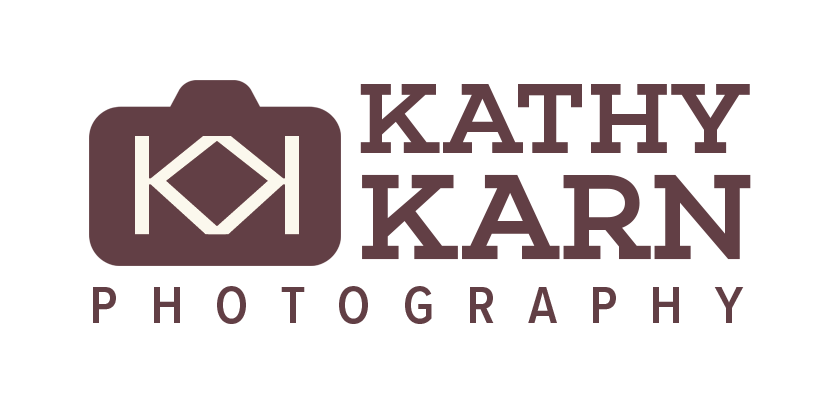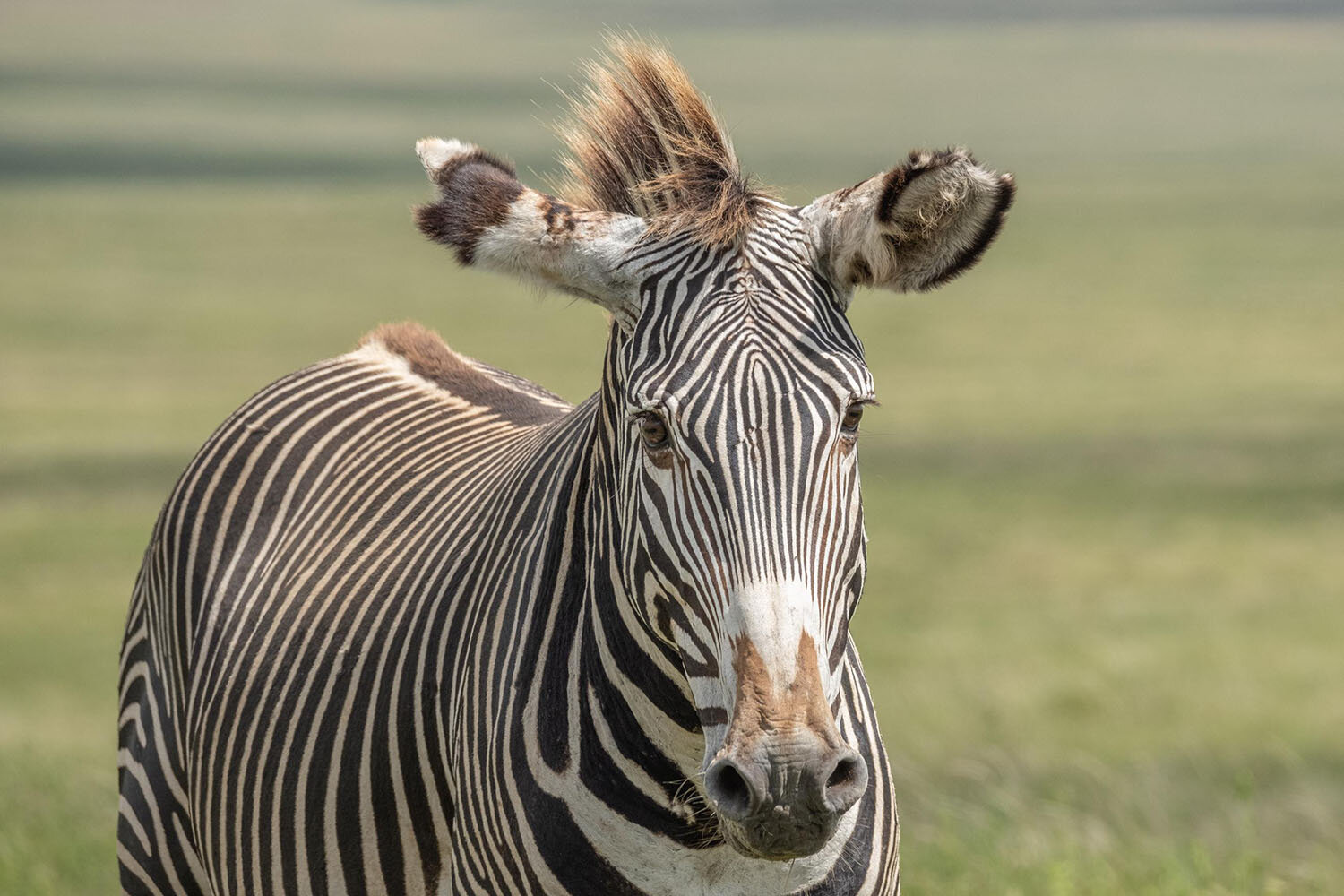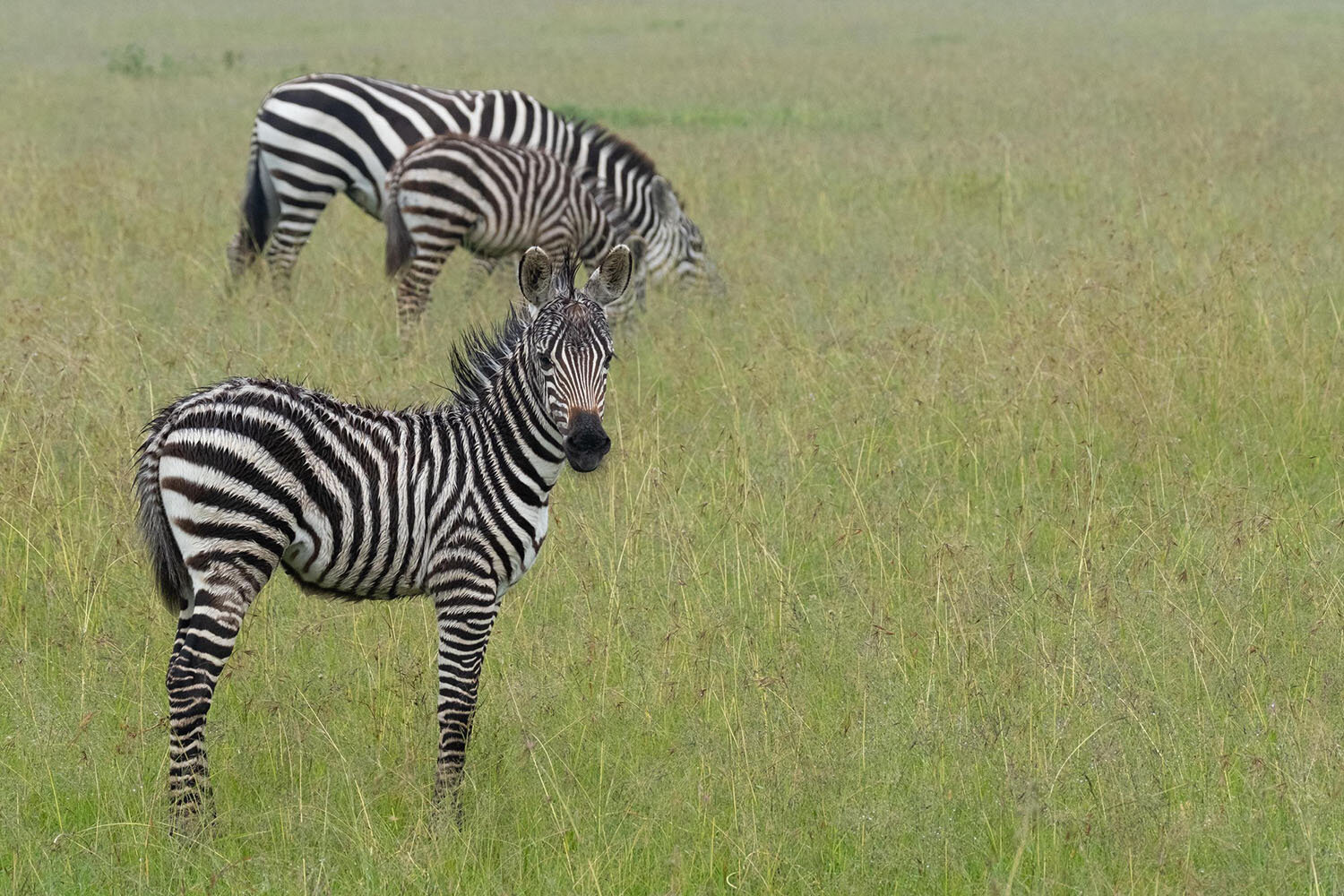Zebras – Black and White or White and Black?
Zebras sport one of nature’s most recognizable patterns. Several African animals have made an impact in the design world, but who can resist the distinctive black and white stripes of the zebra? Just like our fingerprints, every zebra’s pattern is unique. Is the zebra a white horse with black stripes or a black horse with white stripes? One clue lies in the colour of their noses.
If you were to shave a zebra from head to toe you would see that their skin is black. Even though they look like each one has been individually painted with a wet brush dipped in black ink, does this mean then that zebras are black with white stripes?
Growing up I was one of those horse crazy girls. Most of the iconic African animals are unlike any other animal found anywhere else in the world. Finding zebras on the savannah is like coming across a familiar friend, albeit one in a local costume. I’ve asked if zebras are ever used for domestic use like horses or donkeys. The answer is no. I’m told they are very ornery and have weak backs which suggests perhaps someone tried!
There are two species of zebras in Kenya, the Plains Zebra and the Grevy Zebra. The Plains Zebra, a sturdy animal about the size of a large pony, is the most common. They move in family groups, often within large herds. There is safety in numbers and the patterns of their stripes make it hard for a predator to single out one animal from the group. In fact, sometimes it’s hard to tell who is coming and who is going!
Like all horses, speed and a powerful kick are part of their defense weapons too. A zebra foal’s legs are as long as a full-grown zebra, allowing it to blend in against its mother coat and provide added protection against predators.
Another distinction of the Plains zebra is the fact that their stripes go right around their belly as demonstrated by this mare enjoying a good roll and back rub.
Grevy zebras are found in the arid grasslands of Northern Kenya and Ethiopia. Their population has been drastically reduced due to hunting and poaching from over 15,000 in the late 1970s to about 2,400 now. Kenya is home to 90% of the world’s population of Grevy zebras; many of them live on Lewa Wildlife Conservancy. Lewa is committed to protecting the Grevy and increasing their numbers. The first time I saw the Grevy’s long ears and larger size I thought they looked like the fancy cousins of the mule family. They could work for air traffic ground control with those ears!
They are easily identifiable by their big ears, body size, longer necks, and thinner stripes that terminate at their white bellies.
When I visited Samburu Country in Northern Kenya there were 2 young orphan Grevy zebras being cared for in Sarara Camp’s stables. I loved examining the detail of their face patterns. This is one of my favourite Grevy images – I think they look like a couple of friends crowding in for a zebra selfie.
I’m also partial to the Grevy’s Mohawk-style mane. Unlike horses, zebras do not have a forelock.
Zebras provide endless photo opportunities. It is easy to understand why their pattern continues to be popular on clothing and in interior design.
You can support wildlife conservation when you buy a pillow or note cards decorated with one of my Grevy zebra images from my online store.
Support Heartfelt Endeavors. Purchase a zebra pillow or note card today.
A percentage of your purchase will support charities like these.
One of my zebra photos covers both sides of this 20x12” throw pillow, with a linen-feel polyester fabric case that is machine-washable.










